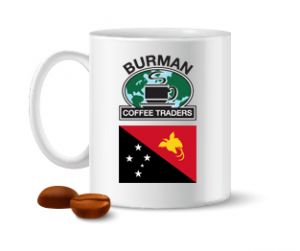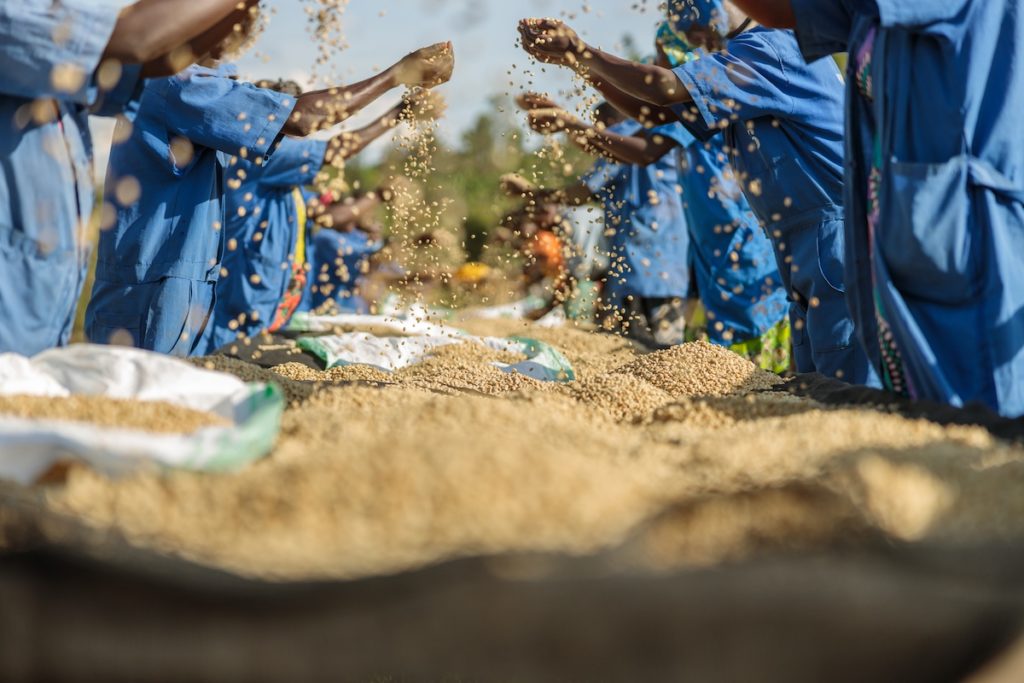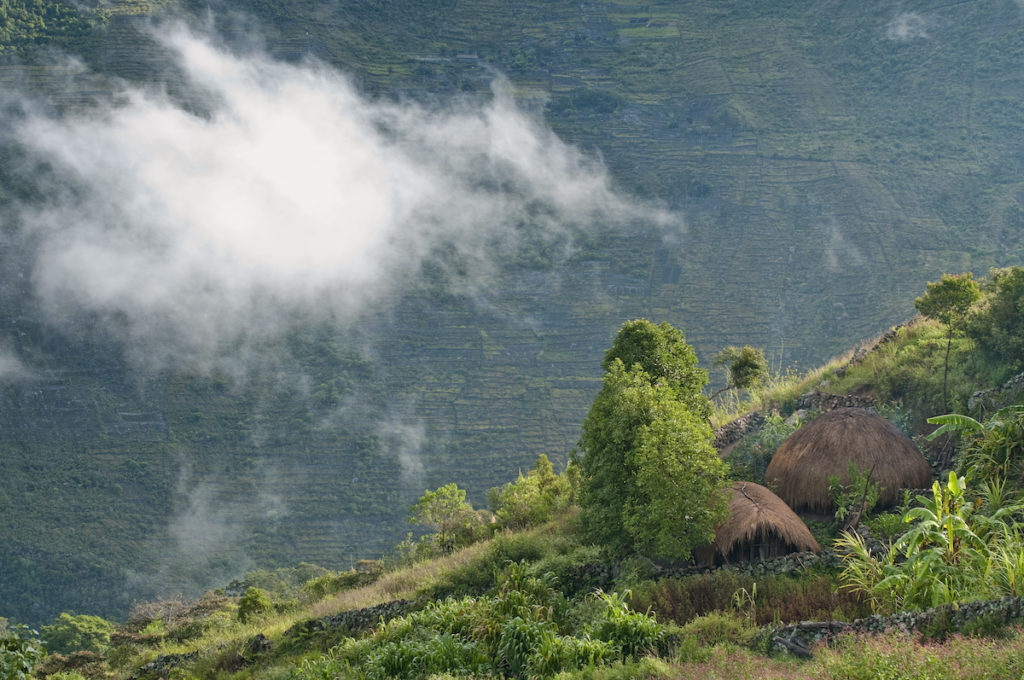This season we went with what they call Kula processing. Kula processing means only dried on raised drying beds and double screened via color sorter and double hand picking. Basically means the best of the best from Carpenter Estates.
Bunum Wo was the first section of Carpenter Estates that I went to visit. Very impressive wet mill and a very crazy cherry picking/gathering system.
One of the more impressive nurseries was located on Bunum Wo and they seemed to be playing around with more strain diversity than the others. Which tends to come out in the cup with a bit more depth to the darker tones.|
Tasting Notes:
Similar to the Sigri beans in the fact it is pretty low acidity, very clean in its cup profile. Very smooth darker toned spice notes. Most would call it a pretty sweet chocolaty cup with a bit of spice. Very smooth cupping this year with no herbal tones or earthyness. Medium bodied with a sweeter edge, a cup almost anyone would enjoy.
Roasting Notes:
Very easy to roast – large screen flat beans that roast very even. Being fresh as can be they can take a little longer to get to 1st crack. Although some will like it, I would avoid the light roast points, one can get some underdeveloped chocolaty notes.
The quick story of Papua New Guinea Sigri (one can clear up a lot of information when you get on the ground somewhere):
What I and many others thought was Sigri Estate is actually Carpenter Estates – Sigri being only one of the areas of the estate (easily the most famous). The other two are Bunum Wo and Kindbng (sounds like Kin ding). Each of the three produces a different cup quality; PNG being full of microclimates really puts a different spin on each section. Each one is like its own village situated right next to each other, with separate wet mills, drying fields, nurseries, living quarters, and schools for each of the three sections. They do share a couple facilities (dry mill, bagging, trucking to port) and many staff.
Each of the three sections of Carpenter Estates has separate fields for different strains and top-notch agronomists to grow the best beans. Most of these folks have coffee in their blood. Being a part of the coffee here is a birthright for them (seen as a cradle to the grave philosophy). Great pride all around.



